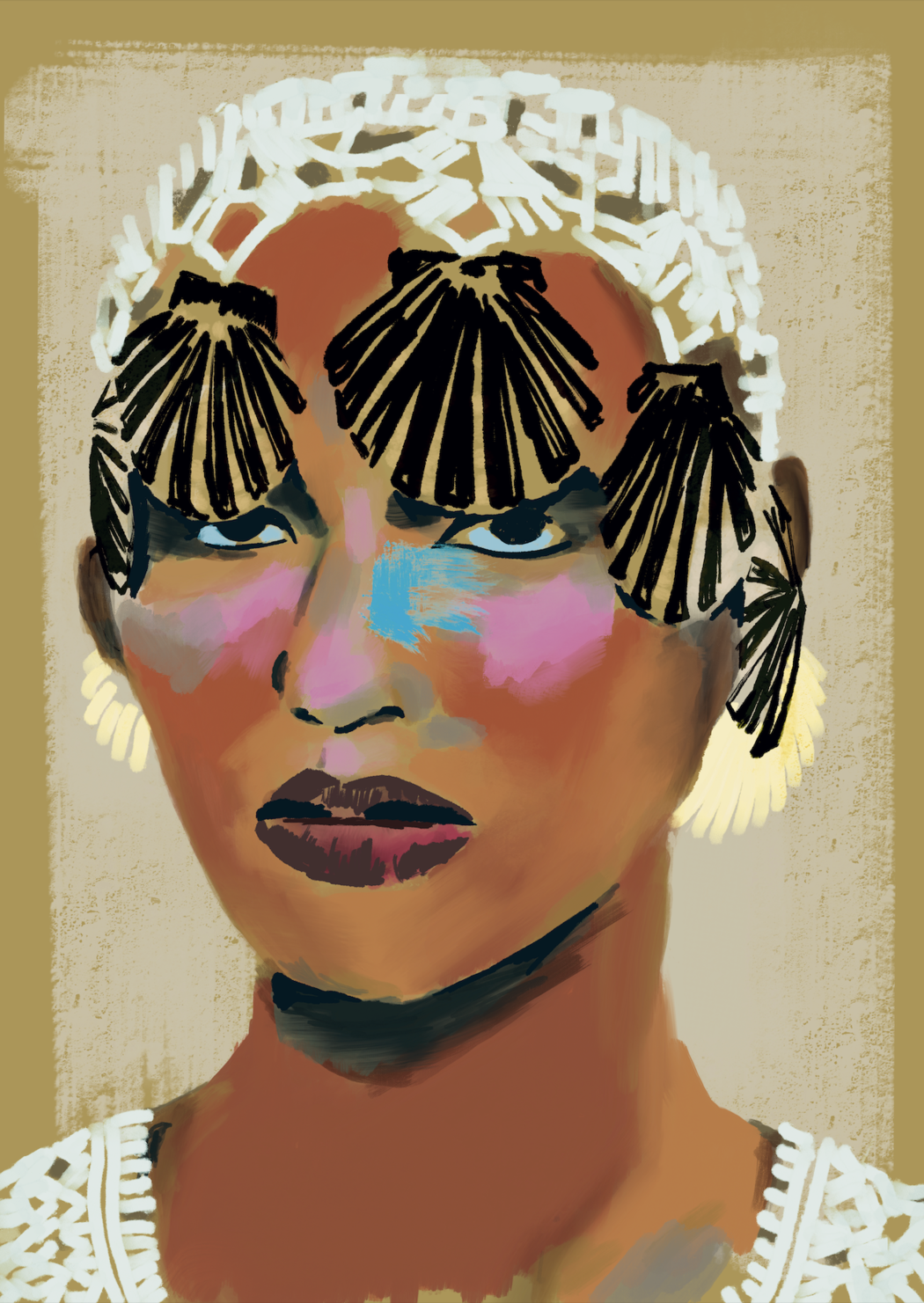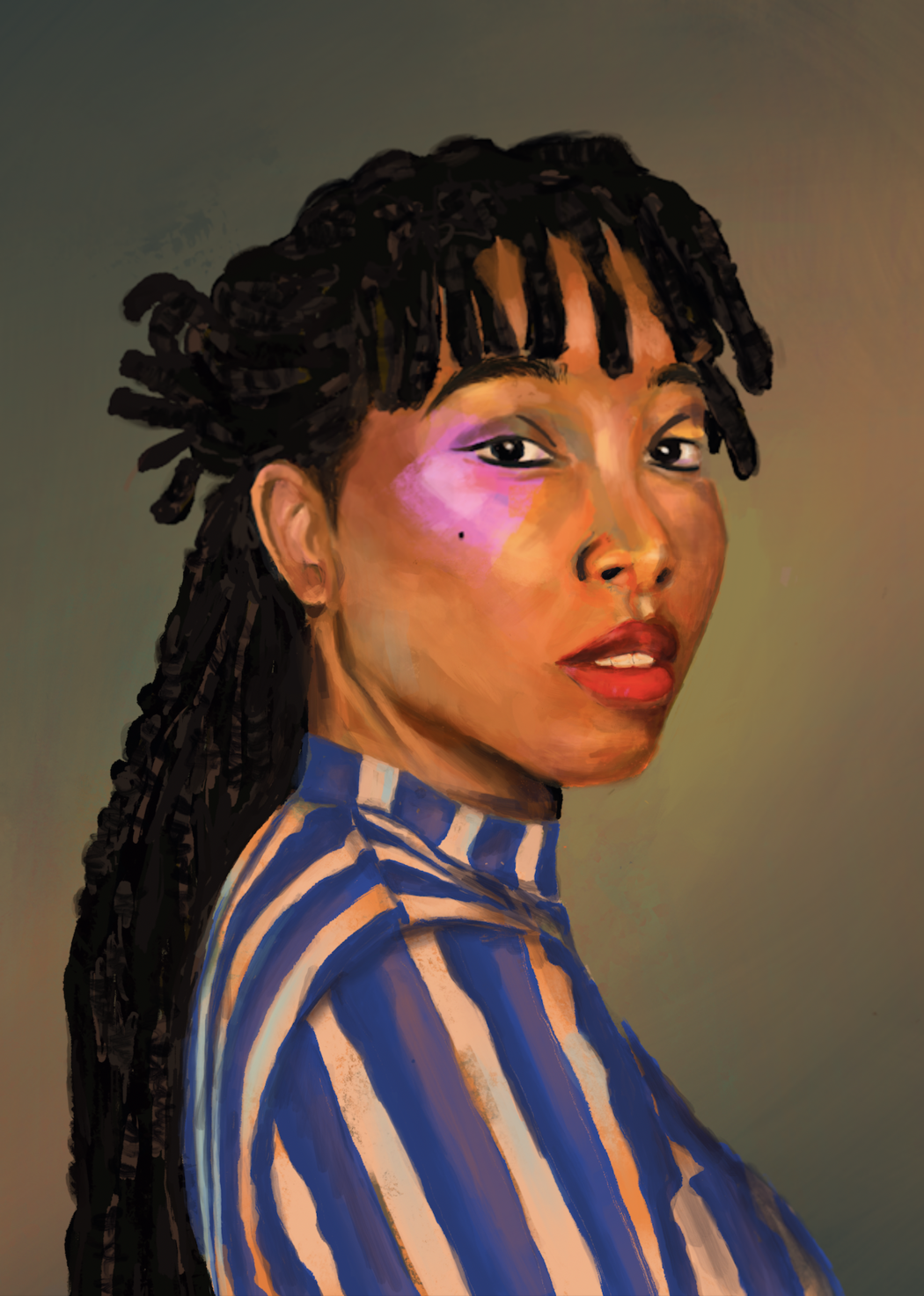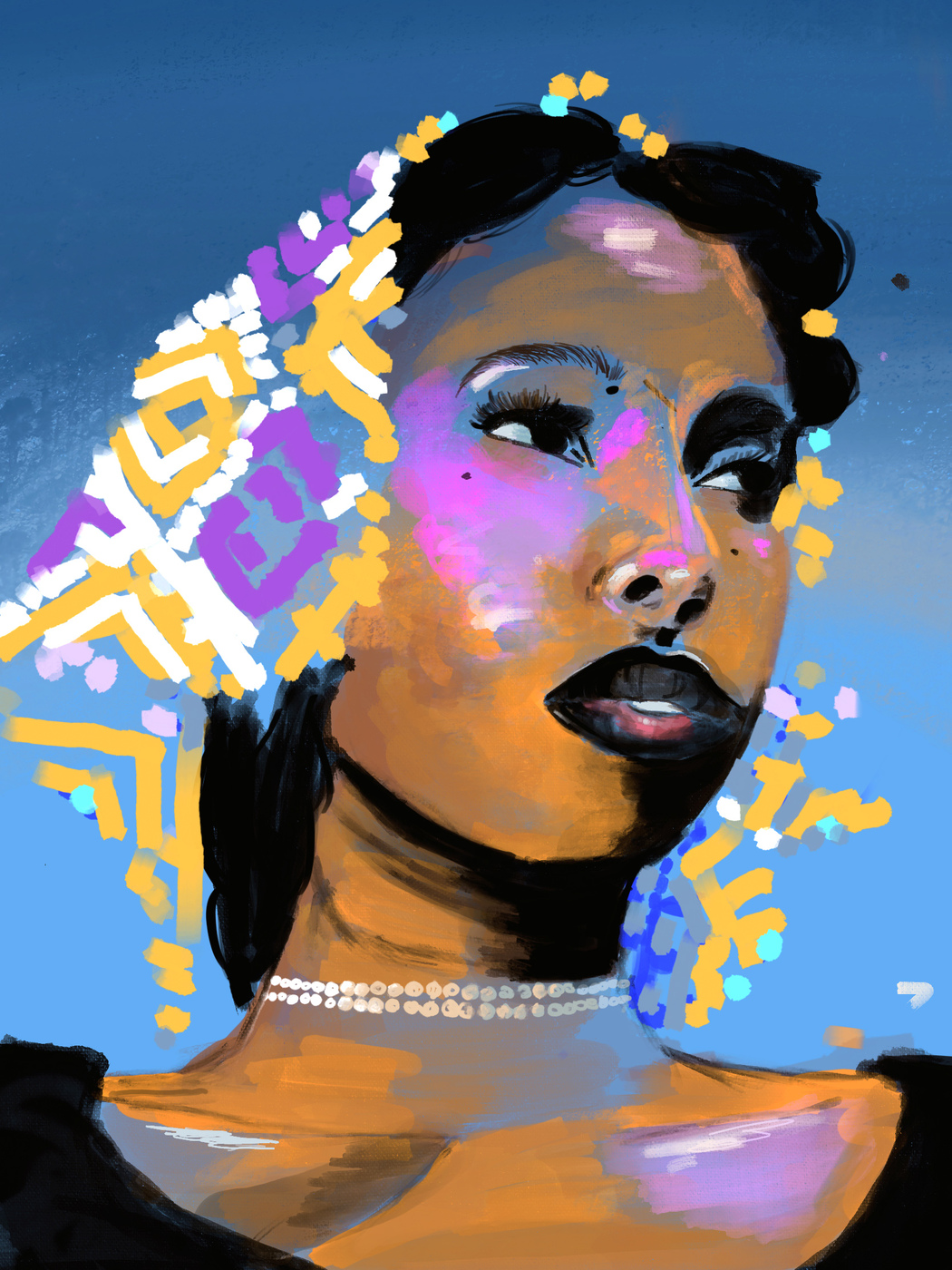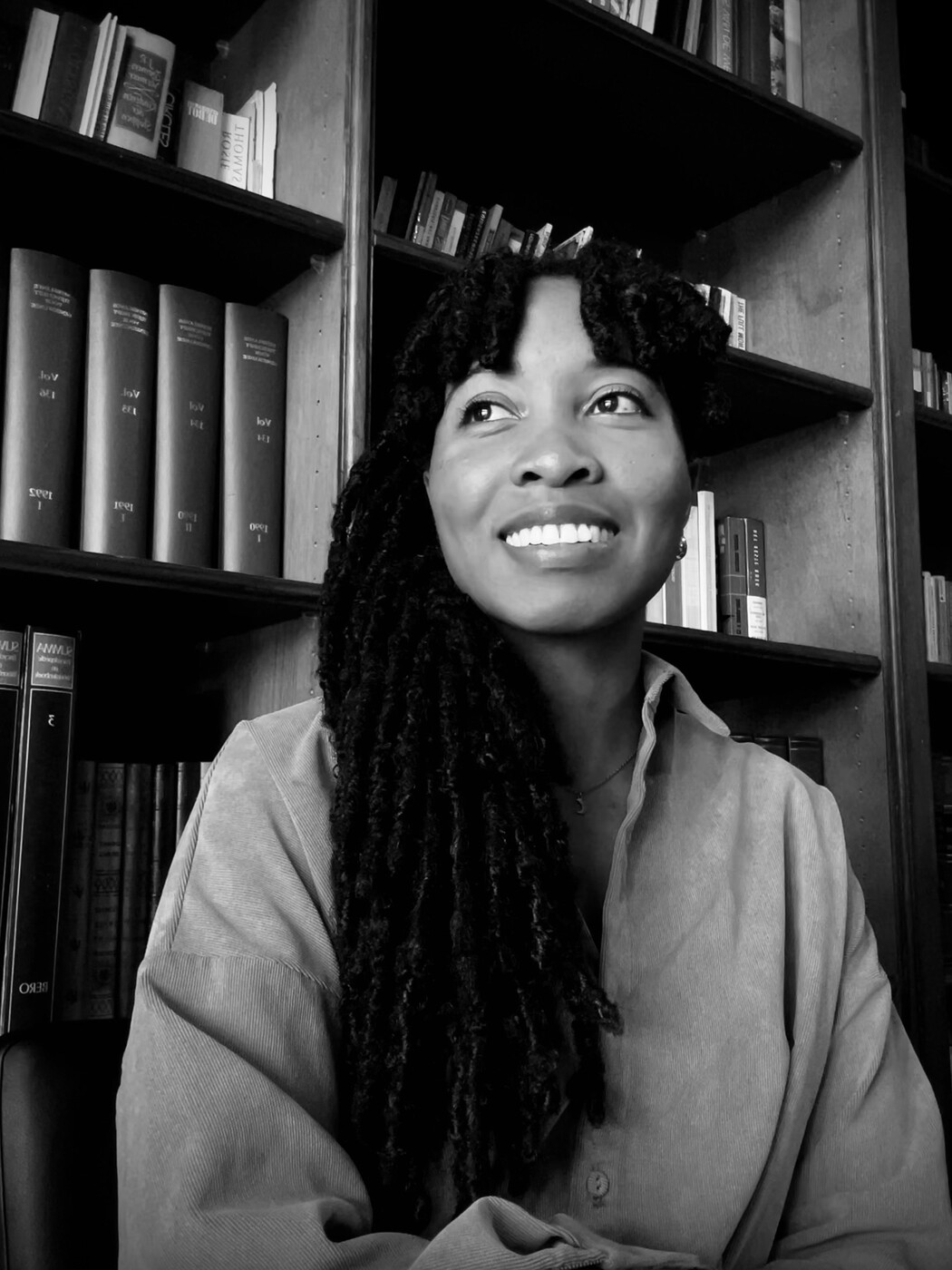Karla King
How has your Caribbean heritage shaped your artistic voice and themes?
I grew up in Jamaica, in a household where being an artist wasn’t seen as a viable career. Not out of lack of passion, but because the creative industries back home can feel limiting, both in resources and recognition. So my artistic expression was something I nurtured quietly, starting with those six-tube acrylic sets and flimsy canvases you’d find at a local shop. That’s where my love for painting began.
My work is deeply influenced by where I come from. Being Jamaican isn’t just about island pride, it’s a lens through which I understand the world, and myself. It is the root of my voice and it shows up not only in the colors I use or the textures I play with, but in the stories I tell. I come from a lineage of proud, powerful women — descendants of the Maroons, led by Jamaica’s first national heroine, Nanny. My family is woman-led: strong, independent, resilient. They embody a fierce independence that shaped me. The kind of strength that I both admire but also witnessed the cost that comes with it. How strength can turn into hyper-independence, the pressure to always be the doer, the fixer or the provider, and how resilience can wear you down. This duality is a constant thread throughout my paintings: the beauty and burden of strength, especially through the lens of womanhood.
Can you describe your transition from Jamaica to the Netherlands and how it influenced your art?
Moving to the Netherlands was transformative, and at first, overwhelming. I wasn’t prepared for the emotional weight of it all. I thought snow would be magical, but instead, I cried the first time I saw it. It hit me: I’m so far from home. The sky was low, the days were grey, and I didn’t know how to exist in this new climate — culturally or emotionally.
I struggled to dress myself, to find rhythm in a lifestyle so different from what I knew. Layers of clothing felt like layers of identity being stripped away. I went from being outgoing and expressive to introverted and unsure. I didn’t recognize myself — and that disconnection pushed me into an identity crisis.
But art became my therapy. It gave me purpose, even when I couldn’t quite articulate what I was feeling. Eventually, I found my way back to myself, not by returning to who I was, but by embracing who I was becoming. And in doing so, I found a voice in my art that I didn’t know I had.
Eventually, I became protective of my newfound joy — my escape, my safe haven. And so I wasn’t ready to make it public (which I did only in February 2025), because I didn’t want to share the art without also telling the story behind it. But once I did, I realized that there was power in that vulnerability. People began sharing their own stories with me — of migration, mental health, loss, and rediscovery. It made me feel less alone, and more connected.
 Karla King | Wise
Karla King | Wise
How do you balance digital and acrylic media in your work? Do you approach them differently?
Acrylics were my first love. I love how forgiving they are—the fast drying time, the ability to layer and subtract, to move quickly and intuitively. They’re part of how I learned to express myself and explore my capabilities as an artist.
Digital art, on the other hand, gave me the freedom I didn’t always have growing up. In Jamaica, art supplies weren’t always accessible—either they were unaffordable or just not available. So coming to Europe and discovering the sheer amount of tools, mediums, and techniques at my fingertips was liberating. But working digitally, I can create anywhere, anytime, and push myself in ways I couldn’t before.
That said, my digital work is heavily inspired by my acrylic techniques. When I paint digitally, I approach it just like I would a canvas, applying layers, textures, and brushwork that mimic traditional painting. I even embrace imperfections intentionally, adding rawness and roughness to give it that tactile, handmade feeling. I want viewers to feel as if they’re looking at something that could’ve been painted on linen or canvas, not something sterile or overly refined.
Interestingly, at exhibitions, people often can’t tell which of my pieces are digital or acrylic at first glance—and I live for that moment of curiosity. I get reactions like, “Wait, is this painted or printed?” And that opens up a conversation about technique, medium, and intent. As a digital fine artist, I still treat my work with the same level of care as traditional pieces: I partner with reputable fine art makers in Amsterdam and print on premium paper, like Hahnemühle. My acrylics, meanwhile, live on canvas or linen—sometimes framed, sometimes bordered by the painting itself.
Ultimately, whether I choose digital or acrylic comes down to my emotional state or the intention behind the piece. Sometimes I need the physical interaction with paint and canvas; other times, I need the immediacy and flexibility that digital offers.
How does poetry influence your visual storytelling?
Poetry gives my work voice, sometimes literally. While I don’t always feel confident calling myself a “poet,” writing has become an important part of my creative process—sometimes before painting, sometimes during, and sometimes as a reflection afterward. Sometimes I write a poem before I start painting, as a way to clarify what I’m trying to say. Other times, the poem comes during or after the painting, as a reflection or reaction to what I’ve created. It’s a very intuitive process with no strict order. I like to think of it as giving viewers a map to navigate the emotion behind the piece.
As someone who appreciates meaning and intention when viewing art, I want to offer that to my audience too. The poetry doesn’t explain the work, but it enhances it. It deepens the story, adds a layer of intimacy, and helps bridge the emotional connection between creator and viewer.
 Karla King | Tired (self portrait)
Karla King | Tired (self portrait)
What role does feminism play in your creative process and message?
Feminism is central to my practice, not as a slogan, but as a lived experience. I was raised by women who did it all: led families, fixed problems, started movements. So for me, feminism is inherited. It’s the lens through which I understand strength, resilience, and survival.
But it’s also about softness. The softness that’s often denied or overlooked in women, especially Black Caribbean women. I create with that duality in mind: the toughness we show the world, and the tenderness we carry inside. My art aims to celebrate that balance and to remind women (especially girls like me) that their stories matter.
There’s something powerful about realizing your story isn’t just yours. That your pain, your joy, your evolution is shared. Feminism, for me, is about making those hidden narratives visible, to inspire, to support, and to remind others (and myself) that we are allowed to take up space and dream big.
 Karla King | Becoming
Karla King | Becoming
In what ways do you explore the emotional landscape of seasonal affective disorder in your pieces?
Seasonal affective disorder (SAD) has been one of the hardest, most transformative parts of my journey. I didn’t know what it was when I first arrived in Europe, I just knew that the winters hit hard. It wasn’t just the cold; it was the absence of light, the weight of the sky, the silence of isolation. During lockdown, I created my first digital painting, She Breathes. It features a girl in a face mask that captures the strange isolation of that time. That piece was born out of the emotional fog I was trying to navigate—the confusion, the surreal experience of existing in a space that didn’t feel like mine. Later, I developed a series titled Lost Content Souls, focused on expat women dealing with seasonal depression, identity, and displacement in the Netherlands. I realized how common these feelings were, especially for people from the sun. But because they seem “expected,” they often go unnoticed.
Through painting, I wanted to say: “you’re not alone, and we’re here to support you.” I don’t paint SAD from the depths of it anymore. I paint from the other side, from a place of healing and hope. I want to show that there is light, there are ways to navigate it, and that awareness itself can be powerful. Sharing my story opened doors for others to share theirs. And through that, I found connection and recovery.
Color, posture, brushstroke—every element in my work is intentional. I use these tools to evoke emotion, to invite conversation, and to offer healing. My goal isn’t just to make something beautiful. It’s to make something felt. Something that connects across borders, cultures, and experiences. Whether I’m working with acrylic or pixels, my art is a reflection of all the layers I carry: my heritage, my struggles, my joy, and my hope. It’s about showing up, imperfectly and honestly, and trusting that someone, somewhere, will feel seen in it.
And so I aim to translate her story… and mine.


Leave a Reply